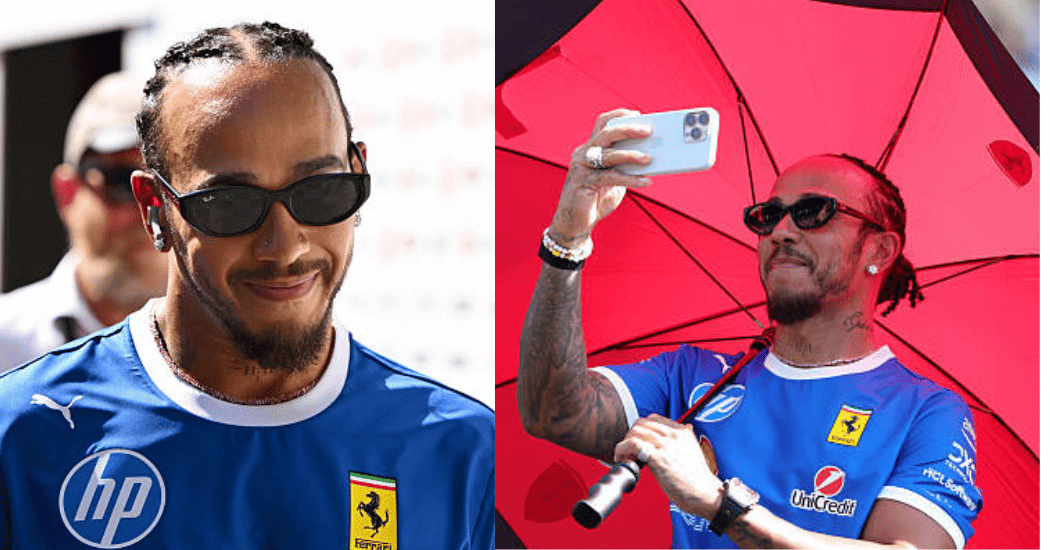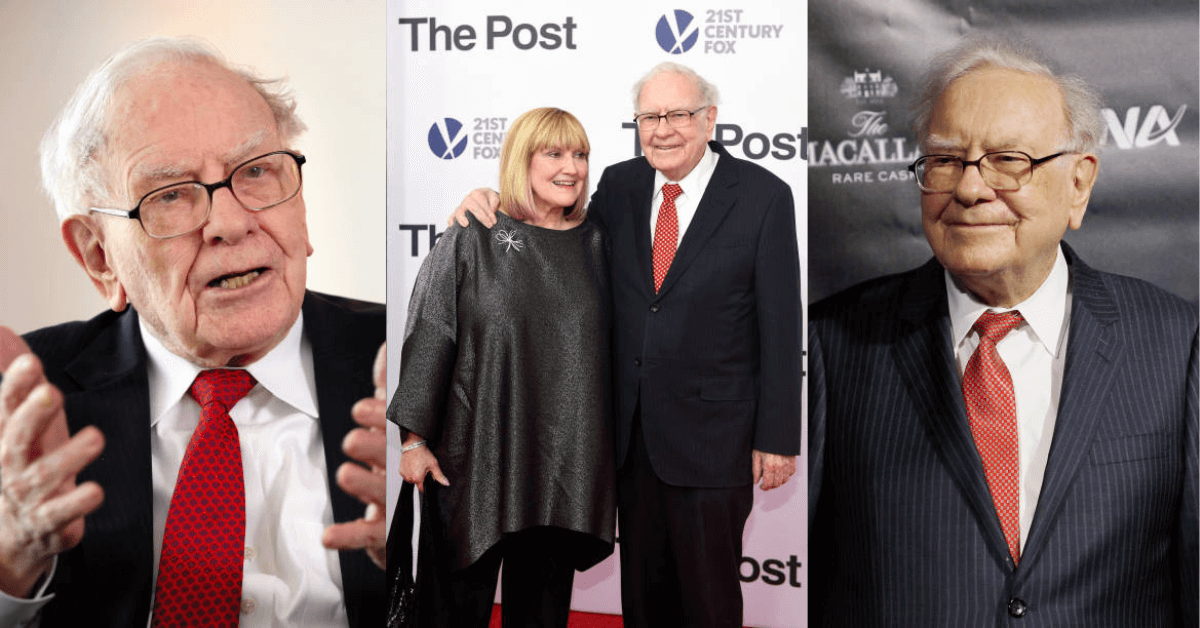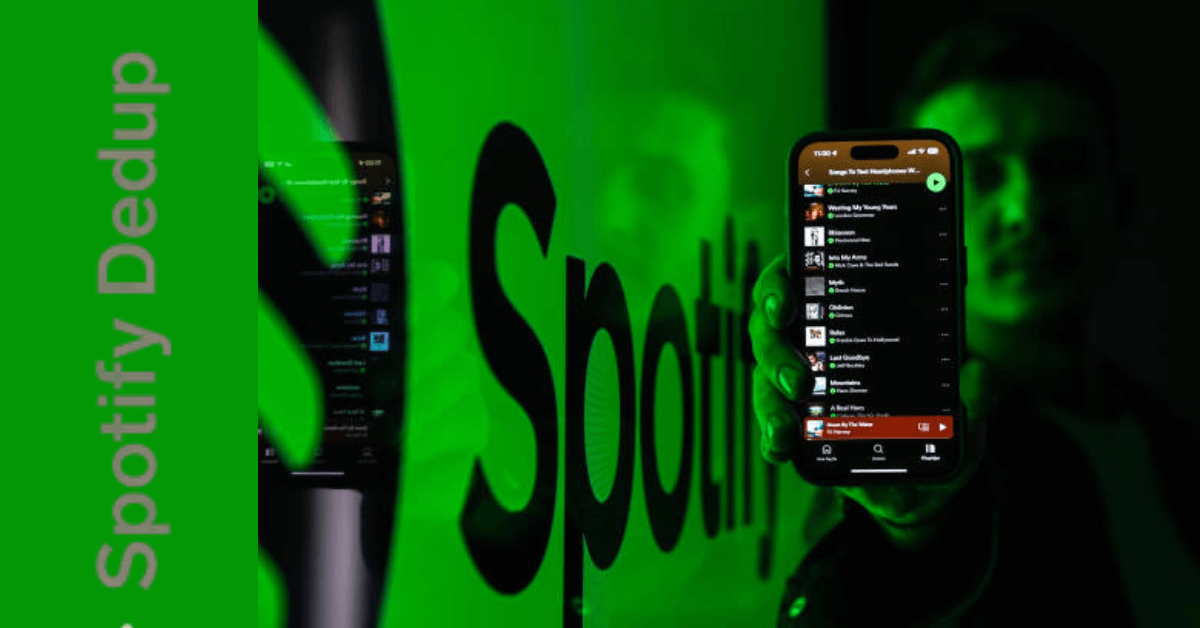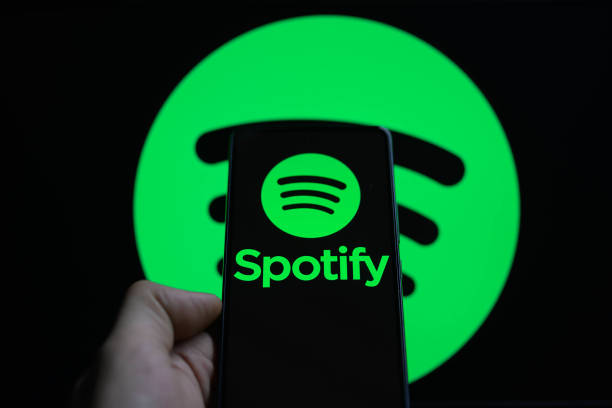BLOG
Gang Slang: 7 Surprising Terms You Must Know

Gang slang is a unique and ever-evolving language that’s both fascinating and, at times, misunderstood. In 2025, as pop culture, music, and social media continue to shape the way we communicate, understanding gang slang has become more relevant than ever—whether you’re a parent, educator, or just someone curious about language.
In this comprehensive guide, we’ll break down the origins, meanings, and cultural impact of gang slang. We’ll also explore related terms like ganglish, gangster bb, ebk gang sign, and hood slang. By the end, you’ll have a deeper appreciation for this powerful form of expression and the role it plays in communities across the world.
What Is Gang Slang? The Language of the Streets
Gang slang refers to the specialized vocabulary used by members of street gangs and those influenced by urban culture. It’s a mix of coded words, phrases, and gestures that serve multiple purposes: building group identity, keeping outsiders in the dark, and expressing shared experiences.
But gang slang isn’t just about secrecy. It’s also about creativity, survival, and belonging. Like any language, it evolves with time, reflecting the realities and aspirations of those who use it.

The Evolution of Ganglish: When Slang Becomes a Dialect
You might have heard the term ganglish—a playful blend of “gang” and “English.” Ganglish is more than just a collection of words; it’s a dialect shaped by music, movies, and street life. It borrows from African American Vernacular English (AAVE), Spanish, and even internet memes.
For example, a phrase like “on the set” (meaning “I swear” or “I promise”) might be used in a rap song, then picked up by teens across the country. Ganglish is dynamic, constantly absorbing new influences and spreading through social media.
Gangster BB: The Digital Age of Gang Slang
In 2025, gang slang isn’t limited to street corners—it’s all over the internet. Gangster bb (short for “gangster baby” or “gangster best buddy”) is a term you’ll see in online chats, TikTok videos, and Instagram captions. It’s often used playfully, as a way to show loyalty or affection within a group.
One user posted, “Shoutout to my gangster bb for always having my back.” This blend of tough and tender is typical of modern gang slang, where words can have multiple meanings depending on context.
EBK Gang Sign: Symbols That Speak Volumes
Language isn’t just about words. In gang culture, signs and gestures are just as important. The ebk gang sign stands for “Everybody Killa,” a phrase that originated in Chicago and has spread to other cities. Flashing the EBK sign is a way to show allegiance—or, sometimes, to provoke rivals.
But it’s important to remember that not everyone who uses these signs is involved in gang activity. Sometimes, they’re adopted by fans of hip-hop or streetwear as a form of self-expression.
Hood Slang: The Broader World of Urban Language
Hood slang is a broader term that includes gang slang but also covers the everyday language of urban neighborhoods. Words like “fam” (family), “cap” (lie), and “drip” (style) have moved from the streets to mainstream culture, thanks to music and social media.
Hood slang is about more than just words—it’s about attitude, resilience, and community. It reflects the struggles and triumphs of people living in challenging environments.
Real-Life Example: How Gang Slang Shapes Identity
Let’s look at a real-life story. A high school teacher in Los Angeles noticed her students using gang slang in class. Instead of shutting it down, she asked them to explain the meanings. The result? A lively discussion about language, culture, and respect.
One student said, “Gang slang is how we show where we’re from. It’s not always about gangs—it’s about being real.”
This example shows that gang slang can be a bridge, not just a barrier.
The Power and Risks of Gang Slang
Gang slang is powerful. It can unite people, create a sense of belonging, and even inspire art and music. But it also has risks. Using gang slang without understanding its context can lead to misunderstandings—or worse, put someone in danger.
If you’re a parent or educator, it’s important to approach gang slang with curiosity, not judgment. Ask questions, listen, and learn. You might be surprised by what you discover.
Surprising Gang Slang Terms in 2025
Let’s break down some of the most popular gang slang terms you’ll hear in 2025:
- EBK – “Everybody Killa,” meaning no loyalty to any one group.
- Gangster bb – A term of endearment for a close friend or ally.
- On the set – Used to emphasize the truth of a statement.
- Slide – To attack or confront someone.
- Opps – Short for “opponents” or rivals.
- Cap/No Cap – To lie/to tell the truth.
- Drip – Refers to someone’s style or appearance.
These terms can change quickly, so stay tuned to music, social media, and conversations to keep up.
Ganglish in Pop Culture: From the Streets to the Mainstream
Ganglish isn’t just for gangs anymore. Thanks to hip-hop, movies, and viral videos, gang slang has entered mainstream culture. Words that once signaled danger or rebellion are now used in everyday conversation.
For example, “no cap” (meaning “no lie”) started as hood slang but is now common among teens and influencers worldwide.
The Role of Social Media in Spreading Gang Slang
Platforms like TikTok, Instagram, and Twitter have accelerated the spread of gang slang. A phrase can go viral overnight, reaching millions of people who might never set foot in the neighborhoods where it originated.
But this rapid spread also means that meanings can shift—or be misunderstood. What’s cool in one city might be offensive in another.
Gang Slang and Music: The Soundtrack of the Streets
Music, especially hip-hop and rap, is a major driver of gang slang. Artists use slang to tell their stories, connect with fans, and assert their identity. Lyrics are packed with coded language, references to street life, and shoutouts to neighborhoods.
If you want to understand gang slang, listen to the music. It’s a window into the culture and the creativity of its speakers.
Hood Slang vs. Gang Slang: What’s the Difference?
While the terms are often used interchangeably, there’s a subtle difference. Hood slang is broader, covering the language of urban life in general. Gang slang is more specific, tied to particular groups and their codes.
For example, “fam” is hood slang for family or close friends, while “EBK” is gang slang with a more specific meaning.
The Risks of Using Gang Slang Without Understanding
It’s tempting to use gang slang to sound cool or fit in. But be careful—using these words without understanding their context can lead to trouble. Some terms are tied to real-life conflicts or rivalries.
If you’re not sure what a word means, ask someone you trust or do some research. Respect the culture and the people who created it.
Gang Slang in a Sentence: Making It Real
Here are a few examples of gang slang in a sentence:
- “He flashed the EBK gang sign at the party.”
- “That’s my gangster bb—she always has my back.”
- “Don’t cap, tell the truth.”
- “He’s got the drip with those new sneakers.”
These sentences show how gang slang is woven into everyday conversation.
The Pros and Cons of Gang Slang
Pros
- Builds community: Shared language creates a sense of belonging.
- Encourages creativity: Slang evolves quickly, reflecting new trends and ideas.
- Influences culture: Gang slang shapes music, fashion, and art.
Cons
- Can be misunderstood: Outsiders may misinterpret meanings.
- Potential for conflict: Some terms are tied to real-life rivalries.
- Excludes others: Slang can create barriers for those not “in the know.”
Ganglish and Identity: More Than Just Words
For many young people, ganglish is a way to assert their identity and resist mainstream expectations. It’s a form of self-expression, a badge of honor, and a way to navigate a complex world.
But it’s also a reminder that language is always changing—and that understanding each other starts with listening.
How to Learn Gang Slang Safely and Respectfully
If you’re interested in learning more about gang slang, here are a few tips:
- Listen first: Pay attention to how words are used in context.
- Ask questions: If you’re unsure, ask someone you trust.
- Respect boundaries: Not all slang is meant for outsiders.
- Stay updated: Slang changes quickly—keep learning.
Real-Life Quote: The Power of Words
One user shared, “Gang slang is more than just talk—it’s how we survive, connect, and show love. Don’t judge it until you understand it.”
FAQs
1. What is gang slang and why is it used?
Gang slang is a set of words and phrases used by street gangs and urban communities. It’s used for identity, secrecy, and self-expression.
2. What is ganglish?
Ganglish is a blend of gang slang and English, often influenced by music, pop culture, and social media.
3. What does the EBK gang sign mean?
EBK stands for “Everybody Killa,” a phrase showing no loyalty to any one group. The EBK gang sign is a hand gesture used to represent this idea.
4. How is hood slang different from gang slang?
Hood slang is broader, covering the language of urban neighborhoods. Gang slang is more specific to particular groups and their codes.
Final Thoughts
Gang slang is more than just a way of talking—it’s a living, breathing part of urban culture. It reflects the struggles, hopes, and creativity of those who use it. Whether you’re a parent, teacher, or just curious, understanding gang slang can help you connect, communicate, and appreciate the richness of language in 2025.
BLOG
Lewis Hamilton: The Journey of a Formula 1 Legend

Lewis Hamilton is widely regarded as one of the greatest drivers in the history of Formula 1. From his early days in karting to his record-breaking years with Mercedes and now his highly anticipated move to Ferrari, his career has reshaped the sport in both competitive and cultural terms. Beyond the racetrack, Hamilton has become a voice for equality, environmental awareness, and innovation, leaving an impact that transcends motorsport.

Early Life and Rise Through the Ranks
Born in Stevenage, Hertfordshire, Lewis Carl Davidson Hamilton showed signs of brilliance at an early age. With the support of his father, Anthony Hamilton, he entered karting competitions where his natural speed and determination stood out. By the time he joined Formula Renault and later the GP2 Series, it was clear that Hamilton had the potential to reach Formula 1. His junior career was marked by consistent wins, podiums, and a racing style defined by bold overtakes and flawless qualifying pace.
The McLaren Years: A Champion is Born
In 2007, Hamilton made his Formula 1 debut with McLaren, becoming the first Black driver in the sport’s history. His rookie season was extraordinary—he battled seasoned champions like Fernando Alonso and Kimi Räikkönen, finishing just one point shy of the title. The following year, in 2008, Hamilton clinched his first World Drivers’ Championship in dramatic fashion at the Brazilian Grand Prix, becoming the youngest champion at the time.
The McLaren years proved that Hamilton had both speed and composure under pressure. Despite occasional car limitations, he secured multiple victories and remained a constant threat in every race.

Mercedes Era: Record-Breaking Dominance
When Hamilton moved to Mercedes in 2013, few expected the dominance that would follow. With the introduction of hybrid power units in 2014, Mercedes became the powerhouse of Formula 1, and Hamilton thrived in this environment. Alongside Nico Rosberg and later Valtteri Bottas, he amassed an astonishing collection of race wins, pole positions, and championship titles.
Hamilton’s run with Mercedes saw him equal Michael Schumacher’s record of seven World Drivers’ Championships. He also broke the all-time records for most Grand Prix wins, most pole positions, and countless podium finishes. His ability to adapt to changing regulations, unpredictable weather, and evolving team strategies solidified his reputation as one of the most complete drivers in history.
Rivalries That Defined an Era
No great champion exists without rivals, and Hamilton faced some of the fiercest. His intense battles with Nico Rosberg culminated in the 2016 season, where Rosberg narrowly secured the title before retiring. More recently, his rivalry with Max Verstappen pushed Formula 1 into one of its most dramatic seasons in 2021. Their wheel-to-wheel duels, controversial incidents, and the Abu Dhabi finale remain etched in motorsport history.
These rivalries highlighted Hamilton’s fighting spirit and ability to perform under extreme pressure.
Ferrari Move: A New Chapter
In 2025, Hamilton embarks on a new chapter with Ferrari, the most iconic team in Formula 1 history. This decision marks a significant shift after more than a decade with Mercedes. Fans and experts are eager to see whether Hamilton can deliver Ferrari’s first championship in over a decade and possibly secure his elusive eighth title. The move also underscores his hunger for fresh challenges even after achieving nearly every milestone in the sport.
Off-Track Influence: Activism and Honors
Hamilton’s influence extends beyond racing. In 2021, he was knighted by Queen Elizabeth II for his services to motorsport, cementing his status as a British icon. His activism, particularly in promoting racial equality and diversity in motorsport, has sparked meaningful change. Through initiatives like the Hamilton Commission, he has worked to increase representation in engineering and racing.
He is also outspoken about climate change, adopting a plant-based diet, investing in electric vehicles, and supporting sustainable initiatives. His ventures into fashion and music demonstrate a multifaceted personality that resonates with fans outside the racing world.
Records and Achievements
Hamilton holds nearly every major Formula 1 record. His tally of Grand Prix victories surpasses 100, and his pole position record is unmatched. He remains tied with Michael Schumacher in total world championships, but his consistency over nearly two decades in Formula 1 sets him apart. These achievements are not only a testament to his driving skill but also to his discipline, preparation, and mental resilience.

Legacy and Future Outlook
As Hamilton continues his journey, his legacy is already secure. He has inspired a new generation of drivers and fans, proving that barriers can be broken in one of the most exclusive sports in the world. His career combines sheer talent with cultural impact, making him more than just a driver—he is a global icon.
Looking ahead, all eyes are on his Ferrari tenure. Whether or not he secures another title, his contributions to motorsport and society ensure his place among the greatest athletes of all time.
FAQs
How many World Championships has Lewis Hamilton won?
Hamilton has won seven World Drivers’ Championships, tying the record held by Michael Schumacher.
Which teams has Hamilton raced for?
He began his Formula 1 career with McLaren in 2007, moved to Mercedes in 2013, and is set to race for Ferrari starting in 2025.
What records does Lewis Hamilton hold?
He holds the records for most race wins, most pole positions, and most podium finishes in Formula 1 history.
Who are his biggest rivals?
His major rivals have included Fernando Alonso, Nico Rosberg, Sebastian Vettel, and Max Verstappen.
Has Lewis Hamilton been knighted?
Yes, he was knighted in 2021 by Queen Elizabeth II for his achievements in motorsport.
What is the Hamilton Commission?
It is an initiative founded by Hamilton to promote diversity and inclusion within motorsport and related industries.
Conclusion
Lewis Hamilton’s career represents the perfect blend of raw talent, relentless ambition, and cultural influence. From karting in Stevenage to dominating Formula 1 with Mercedes and embarking on a new chapter with Ferrari, his journey reflects both sporting excellence and social impact. His records may eventually be broken, but his influence on the sport and his role as a trailblazer will endure for generations to come.
BLOG
Warren Buffett’s Investment Philosophy: Timeless Lessons for Modern Investors

Warren Buffett, often called the Oracle of Omaha, has earned a reputation as the most successful value investor in history. His approach has turned Berkshire Hathaway into one of the most valuable companies in the world and made him a household name in finance. Many beginners look at his track record and wonder how Buffett consistently beats the market while maintaining a simple, long-term philosophy. Understanding his principles not only reveals why he is admired but also helps ordinary investors navigate today’s unpredictable financial markets.

Early Influences That Shaped Warren Buffett
To understand Buffett’s strategies, it is essential to revisit his beginnings. He was deeply influenced by Benjamin Graham, the father of value investing, and his book The Intelligent Investor. Graham’s concept of intrinsic value and the margin of safety became cornerstones of Buffett’s investment style. While Graham focused heavily on numbers and undervalued securities, Buffett later blended this with a qualitative approach, looking at business models, leadership quality, and long-term growth potential.
The mentorship of Charlie Munger, his long-time business partner, refined Buffett’s approach even further. Munger encouraged him to look beyond just cheap stocks and to identify companies with durable competitive advantages—a principle Buffett often refers to as a “moat.”
What Makes Buffett’s Philosophy Unique
Focus on Business Quality, Not Stock Prices
Unlike many traders who react to short-term market swings, Buffett sees himself as a part-owner of a business. He emphasizes understanding how the company makes money, whether it has consistent cash flow, and if its products or services will still be relevant decades into the future.
The Circle of Competence
Another key element of Buffett’s philosophy is the circle of competence. He advises investors to only invest in businesses they truly understand. By staying within this comfort zone, one avoids speculation and poor decision-making driven by hype or trends.
Patience and Compounding
Buffett is famous for saying his favorite holding period is forever. His investments in Coca-Cola, American Express, and Apple illustrate his long-term outlook. He allows compounding returns to work over decades, proving that consistency and patience often outperform constant trading.
Major Investments That Define Buffett’s Strategy
Buffett’s track record is filled with legendary investments. His stake in Coca-Cola, purchased in the late 1980s, has multiplied many times over, thanks to the brand’s strong global presence and pricing power. Similarly, his investment in Apple shows that Buffett is not opposed to technology—he simply waited until he understood its ecosystem and saw evidence of long-term consumer loyalty.
His ownership of companies like GEICO, See’s Candies, and BNSF Railway through Berkshire Hathaway highlights his preference for businesses with predictable earnings and customer loyalty. These companies generate strong cash flow that Berkshire can reinvest in other opportunities.
Risk Management and the Margin of Safety
At the heart of Buffett’s philosophy is risk management. He often reminds investors of his two golden rules:
- Never lose money.
- Never forget rule number one.
The margin of safety principle ensures that he buys companies at a price significantly below their intrinsic value. This way, even if projections are off, the downside is minimized. By holding significant cash reserves, Buffett ensures Berkshire Hathaway is always ready to seize opportunities during downturns, such as the 2008 financial crisis.

Buffett’s Lifestyle and Philosophy Beyond Finance
Despite his immense wealth, Buffett is known for his frugal lifestyle. He still lives in the same Omaha house he purchased in 1958 and enjoys simple routines like eating McDonald’s for breakfast. His modest lifestyle reflects his belief that discipline and rational decision-making matter more than appearances.
Buffett is also a major philanthropist. Through The Giving Pledge, he has committed to giving away most of his wealth to causes like healthcare, education, and poverty alleviation. This underscores his belief that wealth should serve society, not just individuals.
Succession Planning at Berkshire Hathaway
As Buffett grows older, many wonder about the future of Berkshire Hathaway. His designated successor, Greg Abel, is expected to take over leadership responsibilities. Additionally, portfolio managers like Ted Weschler and Todd Combs are already managing significant parts of Berkshire’s investment portfolio. This succession plan ensures that Buffett’s philosophy of value-driven, long-term investing continues well beyond his tenure.

Lessons Modern Investors Can Learn from Buffett
- Think Long Term: Focus on where a company will be in ten years, not tomorrow’s stock price.
- Avoid Debt: Leverage can magnify losses, so Buffett advises keeping debt levels low.
- Invest in What You Understand: Stay within your circle of competence.
- Prioritize Quality: A great company bought at a fair price is better than a mediocre company bought cheaply.
- Stay Rational: Market swings should not influence disciplined decision-making.
FAQs
What is Warren Buffett’s investment strategy?
Buffett follows value investing, focusing on buying strong businesses at reasonable prices and holding them for the long term.
Who influenced Warren Buffett’s style?
He was mentored by Benjamin Graham and refined his philosophy alongside Charlie Munger, who emphasized quality businesses.
What are Warren Buffett’s most famous investments?
Coca-Cola, American Express, and Apple are some of his most iconic and profitable holdings.
How does Buffett manage risk?
He uses the margin of safety, avoids overpaying for stocks, and maintains significant cash reserves for downturns.
Who will succeed Warren Buffett at Berkshire Hathaway?
Greg Abel has been identified as his successor, with support from managers like Ted Weschler and Todd Combs.
Why is Buffett considered frugal despite his wealth?
He continues to live modestly, showing that discipline and rationality matter more than luxury.
Conclusion
Warren Buffett’s legacy is built on more than just wealth—it’s built on principles that emphasize patience, discipline, and a deep understanding of business fundamentals. His ability to blend quantitative analysis with qualitative judgment sets him apart from most investors. By following his philosophy—staying within a circle of competence, valuing quality businesses, and allowing compounding to work—investors can adopt a strategy that has stood the test of time.
BLOG
Spotify Dedup: The Smart Way to Remove Duplicate Songs from Your Playlists

When music lovers spend years curating their playlists, it’s frustrating to discover that the same track appears multiple times. That’s where Spotify Dedup comes in. This simple but powerful tool helps users clean up their playlists and liked songs by detecting redundant tracks using the Spotify Web API. Instead of scrolling endlessly through your collection trying to identify repeats, Spotify Dedup automates the process, saving time while keeping your music library fresh and well-organized.

Why Duplicates Happen in Spotify Playlists
Duplicate songs creep into Spotify playlists more often than users realize. Sometimes, importing playlists from other platforms can introduce extra copies of the same track. Other times, Spotify adds multiple versions of a song—such as a live recording, an album version, or a remastered release—that look nearly identical to casual listeners.
Even something as simple as collaborating on a playlist with friends can result in the same song being added twice. Over time, these duplicates clutter your library, making it harder to enjoy seamless playback. Playlist maintenance, therefore, becomes essential for anyone who values organization in their music collection.
What Makes Spotify Dedup Different?
While Spotify itself doesn’t have a built-in duplicate remover, Spotify Dedup fills that gap. The tool works by scanning your library, including liked songs and personal playlists, to identify repeated entries. It doesn’t just rely on track titles—it compares metadata such as the artist name, track duration, and unique identifiers provided through the Spotify Web API.
This deeper level of analysis makes Spotify Dedup more reliable than manual checking. Once duplicates are detected, the app presents them in an easy-to-read list where you can confirm removal. Within seconds, your playlists are clean, free of redundant songs, and ready for uninterrupted listening.
How to Use Spotify Dedup Step by Step
Using Spotify Dedup is straightforward, even for first-time users.
- Log in securely: The tool uses Spotify’s official OAuth system, so you log in with your Spotify credentials without sharing your password directly.
- Allow permissions: Spotify Dedup only requests access to read your playlists and liked songs, and permission to modify them when removing duplicates.
- Scan your library: The app quickly scans all your playlists and creates a summary of duplicates it finds.
- Review results: Before removing anything, you can review the grouped duplicates. This ensures you don’t accidentally delete different versions of the same track you want to keep.
- Remove duplicates: With one click, the tool eliminates all confirmed duplicates, instantly cleaning your playlists.
Because it’s built on open-source code hosted on GitHub, Spotify Dedup is transparent and trusted by thousands of users who value both efficiency and security.

Privacy and Security Considerations
Any time a third-party app asks for access to your music library, it’s normal to wonder about safety. Spotify Dedup addresses this concern by following strict privacy guidelines. The tool doesn’t store your data on external servers, and it never saves your login details.
Since the source code is available for public inspection on GitHub, users can verify exactly how it works. This transparency reassures music fans that their data remains private and under their control. If you decide you no longer want to use it, you can revoke access at any time through your Spotify account settings.
Alternatives to Spotify Dedup
While Spotify Dedup is one of the most popular tools for cleaning duplicate tracks, it isn’t the only option.
- SpotifyFinder offers a graphical interface with more manual control, making it useful for users who want to double-check each removal.
- Spotlistr is a web-based tool that can both convert playlists from other platforms and identify duplicates, giving it extra functionality.
- Music Cleaner Pro is another option, often used by advanced users who need bulk operations or offline playlist cleanup.
Each of these alternatives works differently, but Spotify Dedup remains a favorite because of its simplicity and reliable detection method.
However, this manual method doesn’t always catch tracks that appear with slightly different metadata. For example, a remastered version might be listed as a separate entry, even though it’s functionally the same song. That’s why automated tools like Spotify Dedup are so valuable—they save hours of tedious work.

Best Practices for Keeping Playlists Clean
To prevent future duplication issues, it helps to adopt some best practices:
- Check before adding: Use Spotify’s built-in warning that alerts you when adding a duplicate to a playlist.
- Audit regularly: Run Spotify Dedup every few months to keep your playlists tidy.
- Use collaboration carefully: When building shared playlists, coordinate with friends to avoid everyone adding the same tracks.
- Backup playlists: Export your playlist data occasionally so you always have a clean copy if things get messy.
By combining these strategies with automated cleanup, you’ll enjoy a smoother, more organized Spotify experience.
FAQs About Spotify Dedup
What is Spotify Dedup?
Spotify Dedup is an open-source web tool that scans your Spotify playlists and liked songs to identify and remove duplicate tracks.
Is Spotify Dedup safe to use?
Yes. It uses Spotify’s secure OAuth login system and does not store your data. You can revoke its access at any time in your account settings.
Can Spotify Dedup clean duplicates across multiple playlists?
Yes. It scans your entire library, including all playlists and your liked songs, making it easy to remove duplicates everywhere at once.
Does Spotify itself have a duplicate remover?
No. Spotify doesn’t currently offer a built-in feature to clean duplicates, which is why tools like Spotify Dedup are so popular.
What happens if I accidentally remove a song I wanted to keep?
Removed songs aren’t permanently deleted from Spotify. You can always re-add them manually from the catalog or your listening history.
Are there alternatives to Spotify Dedup?
Yes, alternatives include SpotifyFinder, Spotlistr, and Music Cleaner Pro, each offering different features and levels of control.
Duplicate songs may not seem like a big deal at first, but over time, they disrupt the flow of your playlists and make your music library harder to manage. Spotify Dedup solves this problem by providing a quick, safe, and effective way to remove redundant tracks. With its open-source transparency, ease of use, and ability to scan across your entire library, it’s a must-have tool for serious music fans.
-

 TECH3 months ago
TECH3 months agoGlow and Type: Exploring Light-Up Computer Keyboards
-

 BUSINESS3 months ago
BUSINESS3 months agoChoosing the Perfect Salmon Fishing Pole
-

 BUSINESS3 months ago
BUSINESS3 months ago2025 Toyota Fortuner: The Ultimate Blend of Power and Luxury
-

 BUSINESS3 months ago
BUSINESS3 months agoBussin’ with the Boys: New Contract, Same Chaos
-

 EDUCATION3 months ago
EDUCATION3 months agoHow Many Teeth Does a Shark Really Have?
-

 ENTERTAINMENT2 months ago
ENTERTAINMENT2 months agoBlades & Grit: Men’s Ice Skates
-

 FOOD3 months ago
FOOD3 months agoYellowtail Unveiled: The Golden Jewel of the Sea
-

 FOOD3 months ago
FOOD3 months agoLiquid Gold: The Science and Soul of Cooking Oil
